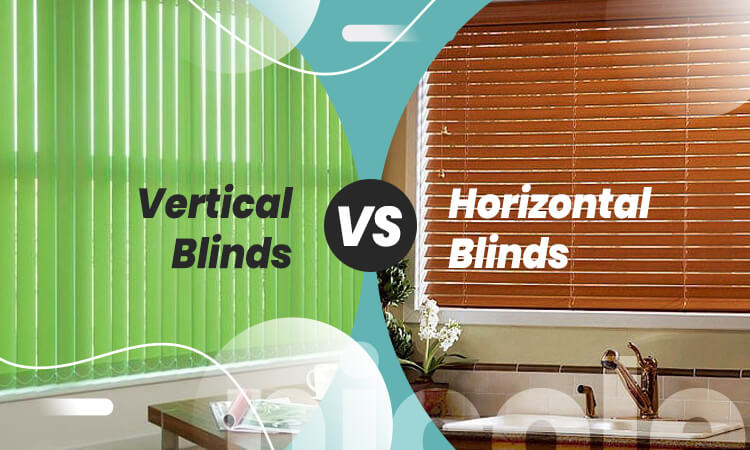
Blinds are a modern alternative to curtains. They enhance the aesthetics and practicality of a room while making your home décor more appealing. These attractive window treatments come in two types, vertical and horizontal. Apart from the orientation of the slats, they also differ in terms of application, functionality and decorative appeal.
When it comes to selecting blinds for your windows, many people get stuck trying to decide between vertical and horizontal blinds.
If you’re also unable to decide which one to choose, then here’s a comparative analysis of the two to help you buy the most suitable one for you.
Horizontal and vertical blinds are both great window treatment options but they are used for different types of windows. Vertical blinds are ideal for covering sliding glass doors, long and wide windows, French windows and conservatories. These blinds have bigger slats and hang at the top of the window opening, thus providing easier access and more light control. Vertical blinds can be easily pushed out of the way because of their vertical alignment and wider slats allow less light to enter.
Horizontal blinds are great options for smaller and narrower windows. These blinds have thinner slats compared to their vertical counterparts and can be best suited for traditional windows that are opened to circulate air. Thinner slats are less efficient in blocking light that’s why they are used for small or medium-sized windows.
The position of your window also plays a crucial role in deciding which type of blind is better for you. Since vertical blinds can be adjusted right and left, they should be placed on east or west facing windows because you can block the sunlight according to the position of the sun during the day. On the other hand, horizontal blinds should be placed on north or south facing windows as the blinds can be adjusted up and down according to change in the angle of the sun.
Vertical blinds are your best bet when it comes to providing sun protection and energy-efficiency. When its too sunny outside, wider slats of vertical blinds block heat while filtering light and keep the room cool and comfortable. Similarly, during colder months, they are convenient heat savers. On the other hand, horizontal blinds are not as good as the vertical option for light control and energy-efficiency. The reason is that when the sun shines downward, the sunlight can easily pass through the cracks between the horizontal slats.
As far as privacy is concerned, horizontal blinds are the winner. When they’re closed up completely, they provide an excellent barrier to onlookers and visually close off a room. On the contrary, vertical blinds have the risk of blowing or being opened accidentally, thus hampering your privacy.
Vertical blinds are low-maintenance compared to their horizontal counterparts. Since the slats are vertically aligned, they collect less dirt and can be easily cleaned by wiping down the dust. If you buy vertical blinds made of vinyl or faux wood, then they provide moisture resistance and less wear and tear.
The alignment of horizontal window blinds makes them more prone to collecting dust, thus creating difficulty in cleaning and maintenance.
Now that you know the distinctive features, uses and applications of horizontal and vertical, it will be easier for you to decide which one is a better choice for your home. If you’re still not sure, contact a window treatment expert in Toronto to get advice on the latest window covering trends and the best options for your requirements.